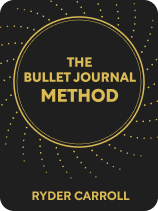

This article is an excerpt from the Shortform book guide to "The Bullet Journal Method" by Ryder Carroll. Shortform has the world's best summaries and analyses of books you should be reading.
Like this article? Sign up for a free trial here .
What is a bullet journal index page? How do you set it up, and what is it used for?
In his book The Bullet Journal Method, Ryder Carroll explains everything you need to know about the bullet journal index page. Essentially, the index page helps you find specific pages in your journal quickly.
Here’s how to set up and use your index page.
Bullet Journal Indexing
Carroll explains that the Bullet Journal’s index page is a hybrid between a table of contents and a traditional index. It’s a set of pages at the front of your journal that keeps a running list of all the instances of a particular topic, no matter where or how often it appears. Therefore, you’re neither limited to a certain number of pages per topic nor prevented from stepping away and returning to a particular topic at a later point in the journal.
Carroll argues that by keeping the index at the front of your journal, you can find specific pages efficiently and see an overview of how you’re spending your time by scanning the list of topics.
| Carroll’s Index: What Makes It Unique? Despite calling his index a hybrid, Carroll neither describes a typical table of contents or index nor contrasts them with his own version. So what sets them all apart? Generally, a table of contents is a set of pages at the front of a book that lists all of its chapters or sections and the page numbers on which they begin in linear fashion. On the other hand, an index is a set of pages at the back of a book that keeps track of all of its topics in alphabetical order and the various page numbers on which you can find them. Carroll’s index pulls specific aspects of each of these—the page-tracking function of the typical index and the placement of the typical table of contents—to create a tool that lets you track instances of a particular topic and easily find them whenever you need. Why did Carroll choose these specific features? Although he explains the utility of page-tracking thoroughly (as previously discussed), he never justifies his decision to place the index at the front like a table of contents. While you could potentially argue that placing the index at the back risks running out of pages as your index grows, you could make the same argument for placing it at the front, since Carroll instructs you to set aside only four pages. Therefore, it’s unclear why he would choose to adopt this particular feature of a table of contents for his hybrid index. |
Setting Up and Using Your Index
Since the index sits at the front of your journal, Carroll suggests you set it up first. To do so, turn to the front of your notebook and number the first four pages 1–4. Then, title the first page “Index.”
Carroll explains that as you fill your journal, you’ll populate the index by listing new topics and their corresponding page numbers. For example, let’s say you decide to start a personal coding project. Once you turn to a fresh page of your journal and title your project, you’ll add it to the next line of your index followed by its page numbers (such as “Coding Project: 20–21”). And if you ever take a break from working on the project and need to come back to it on a later page in your journal, you can easily add this page number to your index (for example, “Coding Project: 20–21, 28”).
| Carroll’s Index: Limited in Functionality? As Carroll explains, the index keeps track of all the sections you add to your journal by listing their titles and page numbers. The benefit of this approach is that the clear correspondence between titles and index entries makes big-picture topics easy to find. Unfortunately, however, this also means that the functionality of Carroll’s index is limited in one very important way: It can’t help you find anything other than the high-level sections of your journal. Whereas a traditional index keeps track of all key terms and topics, no matter where they’re found on the page, Carroll’s index only includes titles (which is more like a table of contents). Therefore, if you wanted to search for any notes related to “school,” for example, you couldn’t use the index to locate them. As a potential solution, add important or frequent topics or keywords to your index along with section titles. That way, you can keep track of everything you’re likely to return to without overwhelming your index with too many entries. |

———End of Preview———
Like what you just read? Read the rest of the world's best book summary and analysis of Ryder Carroll's "The Bullet Journal Method" at Shortform .
Here's what you'll find in our full The Bullet Journal Method summary :
- A comprehensive guide to using the Bullet Journal Method
- How to maintain a journaling practice that can improve your overall quality of life
- How to extend the method beyond productivity to a practice in mindfulness






